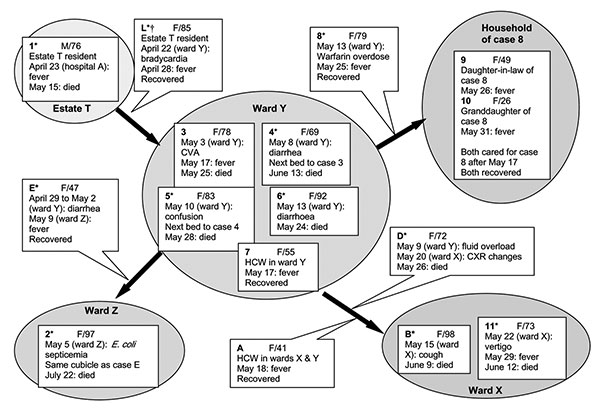Volume 11, Number 1—January 2005
Letter
Tracing SARS-Coronavirus Variant with Large Genomic Deletion
Figure

Figure. Schematic illustration of the epidemiologic relationships between patients with the severe acute respiratory syndrome-associated coronavirus (SARS-CoV) variant with the 386-nt deletion. Patients are grouped according to the most probable site where SARS infection was acquired. Blocked arrows indicate the potential epidemiologic relationships between subgroups of patients. Patients who are suspected of being an epidemiologic link between particular subgroups are indicated by their association with the respective blocked arrows. For each patient, “F” denotes female, and “M” denotes male, and age is specified. The date of admission, followed by admission site in parentheses, and the initial complaint are indicated next. Additional noteworthy clinical information and the subsequent outcome of each case are indicated. *Patients with a history of chronic illness. †The viral genotype was not characterized in patient L due to the lack of clinical specimens positive for SARS-CoV by reverse transcription–polymerase chain reaction. CVA, cerebrovascular accident; HCW, healthcare worker; E. coli, Escherichia coli.